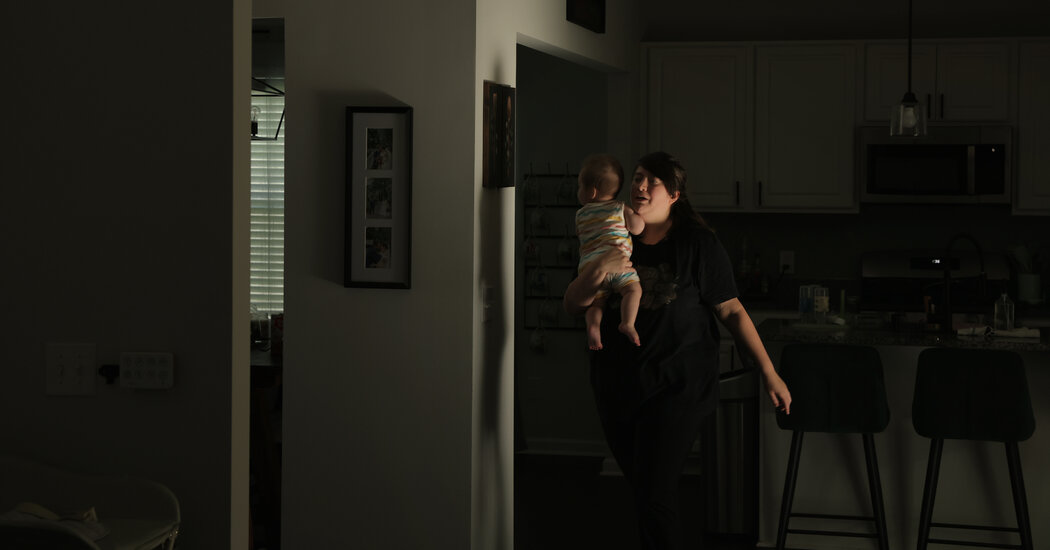[ad_1]
If you give birth to a baby in the United States in 2023, odds are you will learn something about postpartum depression along the way — maybe from your doctor or midwife, maybe from a celebrity or on social media.
But for many women, postpartum depression is shockingly isolating — a mix of sadness, hopelessness and overwhelm that stems not just from the hormonal tumult of pregnancy and the postpartum period, but from many other stressors, like a lack of paid leave, insufficient child care, and the staggering responsibility of caring for a new and helpless human.
The condition, which can arise at any point during the first year postpartum — and is distinct from the relatively short-lived “baby blues” most women experience soon after delivery — is now recognized as one of the most common complications of childbirth. It affects one in eight new moms, and mental health struggles are a leading cause of pregnancy-related death in the United States, primarily from suicide and drug overdose.
There are more treatment options for postpartum depression now than ever before, including the first medication designed specifically to treat it. But factors like stigma and inadequate screening keep many mothers from getting help. The Centers for Disease Control and Prevention estimates that about 20 percent of women were not asked about depression during a prenatal visit, and more than half of women with postpartum depression continue to go untreated.
This spring, The New York Times spent time with four mothers who were then in the grips of postpartum depression. They offered a stark, intimate glimpse into their experiences, in their own words.
Conversations have been edited and condensed for clarity.
Allie’s Story
“If I looked at the baby for too long, I’d start crying. If I had to hand the baby to my husband so I could go to the bathroom, I’d start crying.”
— Allie Strickland, 28, Charleston, S.C. Her son, August, was 8 months old when she spoke to The Times.
My son was due at the end of September, but in late August, I started having contractions. I think I just went into denial, like, no, he couldn’t possibly be showing up this early. The birth itself was not a great experience. They set him on my chest and I only had time to touch his back and for me to realize: “Oh. That’s my baby right there.” Then he was gone. I was so out of it that I kept asking: “Where is he? What’s going on?” My whole body was filled with panic. But they did give him back to me, and we were able to do skin-to-skin.
On our second day in the hospital, I got hit with the baby blues. If I looked at the baby for too long, I’d start crying. If I had to hand the baby to my husband so I could go to the bathroom, I’d start crying. Once we got home, I put the baby’s bassinet as close to our bed as I could, and even then, I would stay awake and just stare at him. Nighttime was the worst. As soon as the sun set, I would feel this intense doom: How much sleep will we get tonight? What if we do get sleep and something happens? We had the Owlet monitor sock and the Nanit video monitor, and even then, I would lay there listening to him breathe. I couldn’t look away.
I started working with a therapist before becoming pregnant, and I knew I was at a higher risk for postpartum mental health disorders because I had a history of anxiety and depression. At three weeks postpartum, I had my medication adjusted. It helped a little, but there was always something for me to feel scared about. Is he getting enough milk? What if something happens while we’re out and about?
At his one-month appointment with the pediatrician, I filled out one of those questionnaires that checks for postpartum mental health issues, and I knew that my answers were going to be a big red flag. Like, oh, we definitely need to talk to this lady. But they never said anything.
Two months ago, I found a new therapist who works specifically with postpartum moms. I see her twice a month and her office is baby-friendly, so I can bring him. It has not been a cure-all or anything close to it, but she has given me some tools to help me manage my anxiety. One is a list of questions I can ask myself to try and identify: Is this thought coming from a place of logic? A place of emotion? How likely is it for this thing to actually happen?
It has helped me a lot to know, OK, other moms also experience intrusive thoughts — they’re worried when they go to the top of the stairs that they’re going to fall and drop their baby, or that something is going to happen while they’re driving. But she has helped me understand that just because certain feelings are common, they are not “normal.”
Carrie’s Story
“Depression feels like a physical weight.”
— Carrie Keefe, 39, Turners Falls, Mass. She has a 10-year-old and 7-year-old, and her baby, Lily, was 4 months old when she spoke to The Times.
We struggled for about five years to get pregnant with Lily. I had multiple miscarriages and more chemical pregnancies than I can count. I do think secondary infertility caused a kind of trauma. I went into this pregnancy feeling like: I am so grateful for this. I have to soak up every second of it. And for the first month after she was born, I was euphoric. But then, and I hate saying it, it felt like the magic of it just kind of died off. It all started to feel really, really heavy.
I started to see a therapist who specializes in loss and infertility about four or five months into my pregnancy. It was online, through BetterHelp. Our insurance didn’t cover it, but I had a coupon code to get a percentage off for seven sessions. In hindsight, I should have pushed to keep going, but I remember asking my husband: “Can we afford $350 a month?” It was like having another car payment.
I run a business making baby bonnets, and I never really stopped working. I took three weeks off after the baby was born — if I don’t show up, my husband and I don’t pay our mortgage. I had this vision that I would take the baby to work with me, but I didn’t think about the fact that once I’m done for the day, I go home and have two very energetic kids who need me, too.
I feel exhausted, like I am unworthy of this life that I used to love. At work, I feel like I am doing the bare minimum. It’s as if my passion for doing what I love is entirely lost. At home, I feel like a zombie. My 7-year-old loves to do craft projects with me, which when I was pregnant I really enjoyed. But they feel more like a chore when dealing with the postpartum depression. The fact that I feel like I can’t fully show up for my family, or for the job I love, kind of adds another level of depression, on top of the hormonal stuff.
A few weeks ago, I was really swimming in my head: Like, I have this baby here who is making it so I can’t work, but if I could work, I could make more money. It was this snowballing frustration and rage. I called my husband and told him: “I need you to come home from work right now.” He dropped everything and did. I was screaming and crying, and he took the baby away to give me a break. I slept for, like, five hours. After that, I spoke to my mom and she told me she thought I needed to talk to somebody.
I met with my OB-GYN and he prescribed Zoloft, and connected me to a social worker who said she’s going to get me placed with a therapist, but it is going to take four to six weeks. I was shocked but I also kind of felt like: Well, maybe I am not really deserving of this help. If it’s going to take six weeks, then clearly there are people out there who need it more than I do.
To me, the depression feels like a physical weight — like, if I could just take it off of me. If I could just reach into my chest and pull it out.
Janelle’s Story
“One fear you have is: Are they going to take my children away?”
— Janelle Jones, 27, Brooklyn, N.Y. She has a 4-year-old and her baby, Eva, was 8 months when she spoke to The Times.
I had some depression when I became a parent the first time around. I got treatment, but I feel like it kind of lingered — and with the second pregnancy it came back full force. I don’t think I knew I was feeling it again until around six weeks postpartum. My partner actually noticed before I did — he was like, “Janelle, I think it’s happening again.”
That’s also when I started to realize, Oh my god, I’m going to have to go back to work soon. I’m a nurse, and I had always tied that to my identity, but I started feeling like, I don’t want to be a nurse anymore. Forget this license.
I couldn’t concentrate on things. I was overstimulated and I was so irritable — with my partner and with my family. I felt like: This is a lot. Did I really want this? It just felt overwhelming. I would sit on the couch and just watch Netflix. I’d try and get up and do something, but it felt like I was stuck.
I started seeing a therapist who works with my OB-GYN’s clinic. It was not a good fit, but she told me about a place called The Motherhood Center that offers a more intensive level of care. You go for full days, from 10 a.m. to 3 p.m. I knew I needed help, but I also felt like, Am I really that bad, that I need that type of assistance? It was hard to come to terms with: I need mental health help. I was in the program from December to February.
A few months after the baby was born, I did have feelings of not wanting to be here anymore. It was this feeling of impending doom, like something bad was going to happen. I never spoke about that when it was happening, because you feel so ashamed. How do you say that out loud? One fear you have is, Are they going to take my children away? There’s such a stigma to all of this — even doing this interview.
I’m taking Prozac and I am continuing to go to therapy — and I am doing better, though I still have hard weeks. I want people to know that motherhood is so complex, and it’s beautiful. I think that getting treatment and being vulnerable is so important. Because it’s in the vulnerability that you’re able to move forward.
Shivani’s Story
“Every time I had Rishav at the breast, I started to cry. ”
— Shivani Hiralal, 29, Phoenix. Her baby, Rishav, was just turning 1 when she spoke to The Times.
I struggled a lot with fertility: We tried for a year, and then I suffered a miscarriage. After that, I had an ectopic pregnancy that essentially took three months to diagnose, and then it took us a whole year after that to get pregnant again. Then a month before our son was born, my husband developed fungal pneumonia. I had to resuscitate him, and he had to be hospitalized and intubated. I think all of that contributed to what I experienced postpartum.
I was in a lot of pain after the birth, to the point where I couldn’t really sit up in bed, and I was just really, really exhausted. I was also having a hard time breastfeeding — he wasn’t really latching. When it was time for our son’s first pediatrician’s appointment, I had my husband and my mom take him because I couldn’t move, I couldn’t sit, everything was uncomfortable. I cried the entire time they were gone. I felt like such a failure of a mother.
Every time I had Rishav at the breast, I started to cry. I dreaded feeding him every two hours. I knew he was relying on me for food, but it was hurting me and he wasn’t getting enough, and it just felt like too much. I switched to exclusive pumping, but I had a lot of guilt, pain and shame around breastfeeding. I didn’t feel that immediate, instant connection to him. I did have moments — not long periods, and not anything I ever felt like I would act on — when I wondered whether my son was better off without me. Was I just not a good mom? Was I not made to be a good mom?
When I was around four or five weeks postpartum, I met with my therapist (I had been in therapy before, and scheduled the appointment when I was still pregnant) and told her: “I am crying all the time. I do not think this is the baby blues.”
At my six-week postpartum checkup, something still felt wrong physically. I still felt a lot of pressure, and I didn’t know if it was my stitches or something else. My OB-GYN referred me to a pelvic floor physical therapist and urogynecologist. Then she started getting ready to leave the room, and I was like: “Wait! Before you go, there’s something I really want to speak to you about, which is my mental health.” And that’s when I just started crying. She thanked me for bringing it up, and told me that because of how busy things are she’s not always able to.
I had a urinary tract infection, and the urogynecologist diagnosed me with prolapse, both of the uterus and the rectum. Thankfully, my husband has great health insurance so I was able to see a pelvic floor physical therapist.
At around nine months, I started feeling a lot better emotionally. I think a lot of that had to do with the fact that I was finally doing much better physically. I’m definitely still healing, but now that my son is turning 1, I kind of look back at that whole experience in awe. I’m like, Wow. I made a lot of progress. I guess there’s a message of hope in here.
If you are having thoughts of suicide, call or text 988 to reach the 988 Suicide and Crisis Lifeline or go to SpeakingOfSuicide.com/resources for a list of additional resources. Go here for resources outside the United States.
[ad_2]
Source link
















